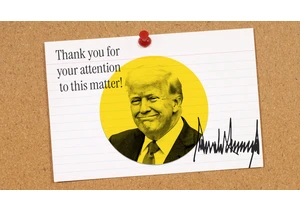In news outlets, business publications, and scholarly journals, there is a crescendo of commentary about the combined power of human intelligence and artificial intelligence. Without question, that convergence is already yielding exciting discoveries in many fields.
Yet a third, equally crucial, kind of intelligence is being left out of the discussion: nature’s intelligence.
The idea that nature itself displays the hallmarks of what we understand as intelligence—the ability to learn, to encode those learnings in new, more effective models, and to continually adapt—is not altogether new. Leonardo da Vinci understood this well. Nature was his teacher and his inspiration. Nothing escaped his intensive observation: water, soil, plants, birds.
Part of his expansive genius was to perceive the hidden systems—the invisible forces and laws—that govern everything from the workings of the human body to the movement of objects through the air. Today, we build on da Vinci’s wisdom when we analyze the intricate chemical communication of plants, the swarm intelligence of insects, the complex click patterns of whale “songs.” We are coming to see, with some humility, that nature is far more intelligent than we humans have ever understood.
But what seemed to fascinate da Vinci the most was the interconnections among these systems and across disciplines. When he studied the human body, designed machines, or created masterpieces of art, he did so holistically, drawing on his ever-widening range of understanding, and producing work that is greater than the sum of its parts. This approach to innovation has never been more relevant or more possible than it is today. The fusion of natural, human, and machine intelligence—a synthesis that I call polyintelligence—promises solutions to some of the world’s most intractable problems.
Indeed, this integrated framework is already beginning to revolutionize biotechnology. From drug development to generative synthetic biology, polyintelligence is enabling breakthroughs that no single form of intelligence—or even the convergence of two—could achieve on their own. Take the example of the Human Genome Project, which completed its mapping of the blueprint of human DNA in 2003. More than two decades later, that union of nature, human intelligence, and AI continues to yield—among other things—novel DNA and mRNA sequences that could unlock new breakthrough medicines.
Or consider how scientists are using polyintelligence to “learn the language” of proteins, enabling us to craft new proteins that don’t exist in nature with specific therapeutic functions. Just as words and grammar define a spoken language, AI analyzes vast amounts of protein data to understand the “rules” that dictate protein structure and function. This knowledge allows scientists to design novel proteins by writing new sequences within nature’s linguistic framework, surpassing traditional limitations, and developing innovative treatments for complex diseases.
Beyond biomedicine, polyintelligent thinking, polyintelligent systems, and polyintelligent solutions will have wider applications—and, I believe, unmatched power to mitigate climate change, increase agricultural yields in a sustainable way, and address other complex, global challenges. Again, this is not theoretical. Nature’s intelligence, supercharged by AI, is being applied to accelerating the evolutionary process of staple crops such as corn, wheat, and soybeans to enable them to grow in a hotter and drier environment.
The promise of polyintelligence is clearly even greater than our hopes for AI. It is vitally important, therefore, that we manage this transition effectively and judiciously. The principles we set today—and the decisions we make regarding governance, ethics, and bias—for the use of AI should advance the goal of enabling polyintelligence. To realize its full potential, we must prioritize interdisciplinary collaboration by fostering cross-disciplinary research and integrating diverse expertise across sectors. By uniting policymakers, scientists, industry leaders, and educators, we can harness the collective strengths needed to both understand and address the world’s most pressing challenges. From urban-resilience planning and conservation of biodiversity to optimizing energy production and distribution, polyintelligence can catalyze sustainable solutions with wide-ranging impact.
Lastly and perhaps most importantly, polyintelligence will also require a shift in human intelligence. In particular, we must stop seeing ourselves as the ultimate arbiter of what is good, correct, or intelligent. Whether we’re talking about the body’s complex and shifting methods of disease resistance, or a recent study showing that horses can think strategically and plan their actions, we should have the humility—as da Vinci, a true genius, did—to recognize that much of the natural world operates beyond our ability to comprehend it. Our knowledge is and will always be incomplete. But it is expanding significantly, in exciting ways—reshaping the very nature of discovery itself.
Accedi per aggiungere un commento
Altri post in questo gruppo

The infamous “Am I The A**hole?” subreddit is making its way to the small screen.
Hosted by Jimmy Carr, the new game show for Comedy Central U.K. will feature members of the public appea

Former employees of OpenAI are asking the top law enforcement officers in California and Delaware to s


Microsoft released its annual Work Trend Index report on Tuesday, which argued that 2025 is the year that companies stop simply experimenting with AI and start building it into key missions.

Artificial intelligence has rapidly started finding its place in the workplace, but this year will be remembered as the moment when companies pushed past simply experimenting with AI and started b

As the founder of World Central Kitchen, renowned chef and humanitarian José Andrés has truly mastered the art of leading through crisis. Andrés shares insights from his new book, Change the R

European Union watchdogs fined Apple and
